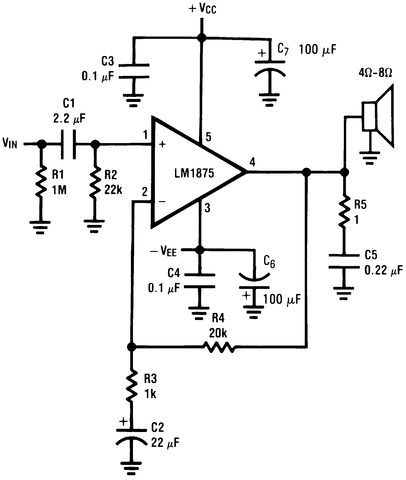Overclocked
Member
Ive never built a amplifier before, but I will be using the LM1875 20W Chip (also known as a gainclone). Are there any special capacitor or resistor types I need to use for audio applications (ie metal film, carbon, poly, etc) ? This is a very well known circuit in the Audiophile crowd, but erm, they are a very different breed.
I will be doing it by the book, so to speak, using TI's suggested schematic. Why people have reduced the parts count is beyond me. R1 will most likely be substituted for a Log Pot.

I will be doing it by the book, so to speak, using TI's suggested schematic. Why people have reduced the parts count is beyond me. R1 will most likely be substituted for a Log Pot.

